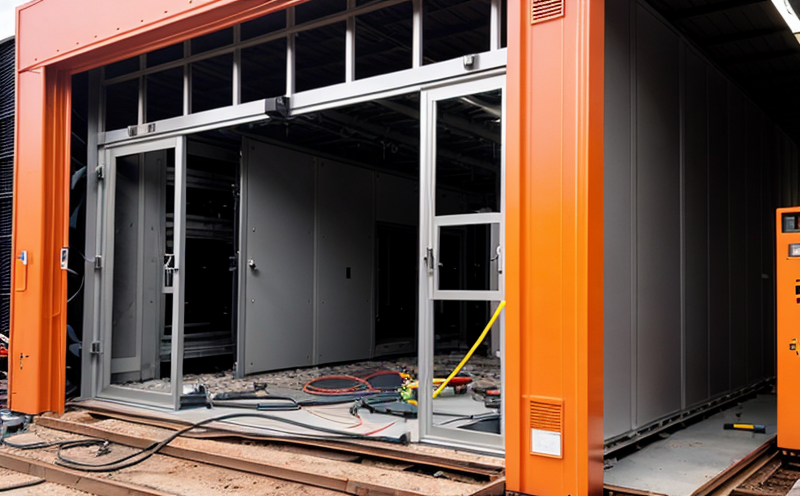ASTM E2981 Thermal Safety Testing of Button Cell Batteries
The ASTM E2981 standard is a crucial document in the battery industry, providing guidelines to ensure the safety and reliability of button cell batteries through thermal testing. This service focuses on assessing the thermal stability of these small but powerful batteries used in various consumer electronics devices such as watches, hearing aids, and medical equipment.
Thermal events are one of the most significant risks for battery failure, leading to potential hazards ranging from minor discomfort to severe incidents like fires or explosions. By adhering to ASTM E2981, manufacturers can ensure that their batteries meet stringent safety requirements before they reach the market.
The testing protocol outlined in this standard is designed to simulate real-world conditions under which a battery might be exposed to excessive heat. This includes direct exposure to high temperatures and potential internal short circuits. The primary goal of ASTM E2981 is to identify any risks associated with thermal runaway, a dangerous condition where the temperature inside the battery rises uncontrollably.
The testing procedure involves placing individual button cell batteries in an oven maintained at specific temperatures for extended periods. During this time, various parameters are continuously monitored, including but not limited to voltage, current, and temperature changes within each battery. If any signs of thermal runaway or abnormal behavior are detected, the test is immediately halted to prevent further damage.
After the testing period ends, batteries that have undergone ASTM E2981 are inspected for signs of damage, leakage, or other anomalies that could indicate an unsafe condition. Compliance with this standard ensures that all button cell batteries meet the highest safety standards set forth by industry experts.
The process also includes detailed documentation and reporting, which provides valuable insights into how each tested battery performed during thermal stress conditions. This information is invaluable for quality assurance teams who rely on it to make informed decisions about product improvements or design changes aimed at enhancing overall safety levels.
By leveraging ASTM E2981, companies can demonstrate their commitment to producing safe and reliable products while also meeting regulatory requirements imposed by government agencies worldwide.
Applied Standards
The primary standard applied in our ASTM E2981 thermal safety testing of button cell batteries is ASTM E2981-20 Standard Test Method for Evaluating Thermal Stability of Button Cell Batteries. This document specifies procedures for conducting tests intended to identify potential risks related to thermal instability within these small but powerful batteries.
In addition to ASTM E2981, we also incorporate other relevant international standards such as IEC 62133-2015 Safety of Rechargeable Consumer Batteries, which covers broader aspects of battery safety beyond just thermal stability. By adhering to these comprehensive guidelines, we ensure that our clients receive thorough and accurate assessments for their products.
Our team stays current with updates from organizations like the American Society for Testing and Materials (ASTM) and International Electrotechnical Commission (IEC), ensuring that all tests performed meet the latest industry best practices.
Benefits
- Enhanced Safety Compliance: Ensures compliance with international standards, providing peace of mind for both manufacturers and consumers.
- Risk Mitigation: Identifies potential thermal hazards early in the development process, allowing for timely corrective actions.
- Quality Assurance: Provides detailed reports that help quality assurance teams make informed decisions regarding product improvements.
- Regulatory Compliance: Meets stringent regulatory requirements set by governing bodies around the world.
The benefits extend far beyond mere compliance. By conducting ASTM E2981 thermal safety testing, companies can build trust with their customers by delivering safer products that meet strict quality standards. This not only protects end-users but also enhances brand reputation and market position.
Use Cases and Application Examples
The application of ASTM E2981 thermal safety testing is particularly relevant for manufacturers producing button cell batteries used in various consumer electronics devices, including:
- Hearing aids
- Watches
- Portable electronics
- IoT devices
In these applications, even minor issues with thermal stability can have significant consequences. For instance, a malfunctioning battery in a medical device could lead to critical failures during use, putting patient safety at risk.
Our team works closely with clients to understand their specific needs and tailor the testing process accordingly. We offer comprehensive solutions that address not only the technical requirements of ASTM E2981 but also consider broader aspects like product lifecycle management and post-market surveillance.





